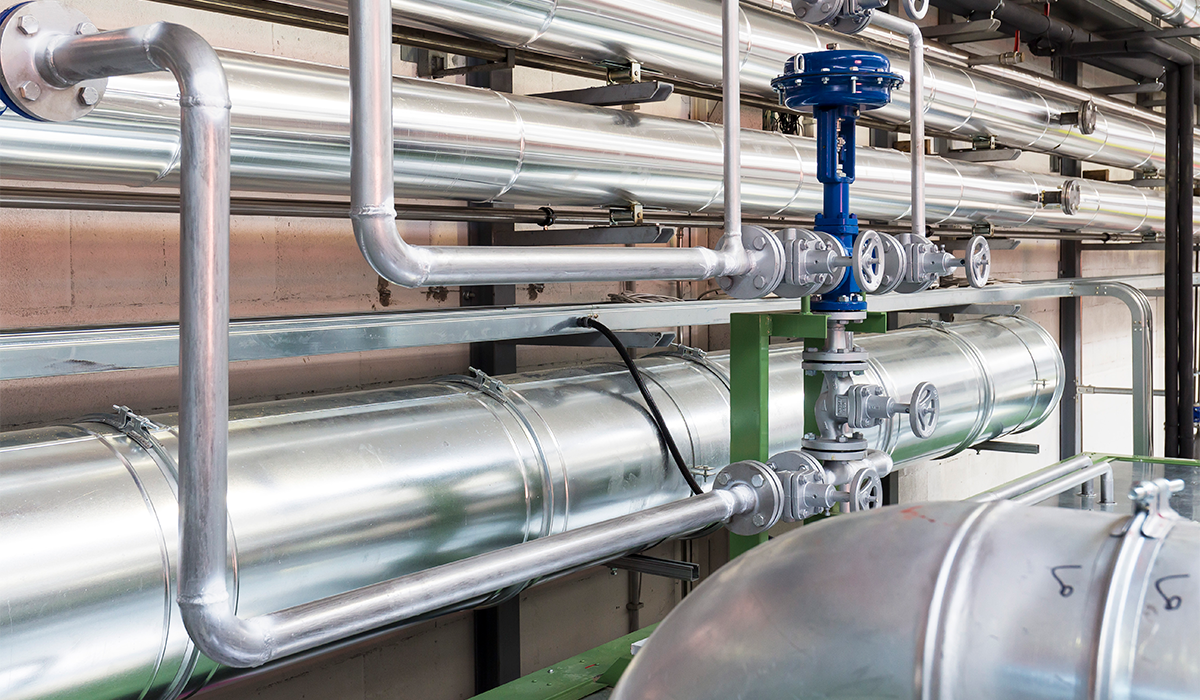
The liquid that’s coursing through your piping systems isn’t the only thing that’s valuable in your pipes. Precious energy is rolling along with it.
Unfortunately, friction loss can stop energy, put extra stress on your system, and cost you more money.
In this article, we examine the problem of friction loss and pinpoint ways to prevent friction loss in your pipe systems.
What Is Friction Loss?
Friction loss is a measure of the amount of energy your piping system loses because your fluids are meeting resistance. As fluid flows through your pipes, it carries energy with it. Unfortunately, whenever there’s resistance to flow rate, it diverts fluids and energy escapes. These opposing forces cause friction loss in pipes.
How Does Friction Loss Hurt Your Piping System?
It may not be obvious, but friction loss can cost you time, money, and efficiency. Here are a few ways friction loss strips money out of your piping system:
Energy Loss
When friction loss occurs, it means energy is escaping your system. Because your piping system has to work harder to push fluids past resistance, it burns more energy. Ultimately, that loss of energy results in more money out of your pocket.
Worn Pipes and Fittings
When fluids have to dodge residue or move around barriers, they end up slamming into the sides of pipes. At the same time, as corridors close off, pressure can build up and can damage fittings. The bottom line? If you’re not promoting steady pipe flow, you could be putting extra stress on your piping system.
Damaged Pumps
If you have too much friction loss, it can wear down your pump or reciprocating compressor. Friction forces your pumps to work harder to push fluids through clogged pipes. That extra effort means your valuable energy-producing technology can become overworked and break down faster.
Unwanted Pipe Movement
When fluids slosh against the sides of pipes unnaturally, it can cause pipes to move and scrape against hard surfaces. In turn, pipes can wear down, corrode more quickly, and rupture.
What Causes Friction Loss?
All kinds of things can cause friction loss, but there are a few friction factors that tend to affect your pipe flow the most. Here’s a closer look at the common causes of friction loss:
- Viscosity: The viscosity of the fluid you’re transporting can contribute to friction loss. Put simply, viscosity describes the thickness of the fluid your pipes are transporting. Fluids with higher viscosity will be more likely to meet resistance than those with a low viscosity. For instance, water is more likely to rush unresisted through pipes than thicker fluids, such as oil.
- Internal pipe diameter: Essentially, the less surface your fluids have to run over, the lower the chance of friction loss. That’s why pipes with a smaller diameter usually have more friction loss.
- Internal pipe roughness: The rougher the internal surfaces of your pipes are, the harder fluids need to work to slide around or over them. That’s why internal corrosion and buildup can cause resistance and friction loss.
- Changes in pipe slope: If your pipes change in elevation, it can force liquids to work against gravity, and you can lose energy along the way. That’s why uneven or sagging pipe runs can suck energy out of your system.
- Pipe length: The further fluids have to travel, the harder they have to work. Longer pipe runs will naturally have a higher potential for friction loss than shorter runs.
- Valves and fittings: Internal pipe walls aren’t the only things that contribute to friction loss. Valves and fittings can also inhibit flow and cause more friction.
How to Reduce Friction Loss in Pipes
By preventing friction loss at every pass, you’ll boost the efficiency of your piping system, improve production, and save money. Here are a few ways to cut down friction loss and encourage steady pipe flow:
Reduce Interior Roughness
By smoothing out interior pipe surfaces, you’ll pave a clearer path for liquids to flow. That means cleaning pipes thoroughly and keeping them free from debris.
It also requires a proactive approach to fighting pipe corrosion. When pipes corrode, it causes costly dips and blockages. That’s why it’s important to keep corrosion from creeping into pipe surfaces and eating away metal.
Increase Pipe Diameter
By widening pipe diameters, you ensure that liquids don’t have to work as hard to squeeze through pipes. In turn, you’ll reduce flow resistance and friction loss in pipes. Just be sure you’re supporting larger pipes with strong, efficient pipe supports.
Reduce Turns
By straightening out pipe runs and clearing your pipe’s path, you can avoid friction loss. Accomplish this by removing tees, fittings, and other sharp turns whenever it’s possible.
Try to work in gentle bends that encourage more natural flow. Sometimes, you will have to come up with creative solutions and work with a pipe support manufacturer to build custom supports.
Find a Custom Solution for Your Piping System
If you want to reduce friction loss in your pipes and enhance your piping system’s performance, you may have to think outside the box. But you don’t have to tackle your next piping project on your own.
Request a quote, and we’ll help you find the right solution to boost your piping system’s performance.






